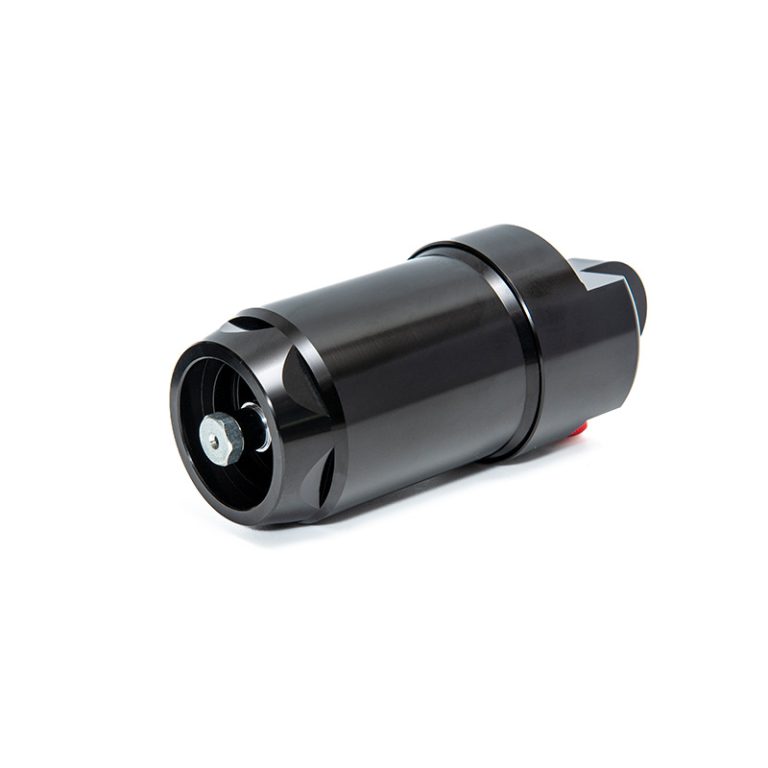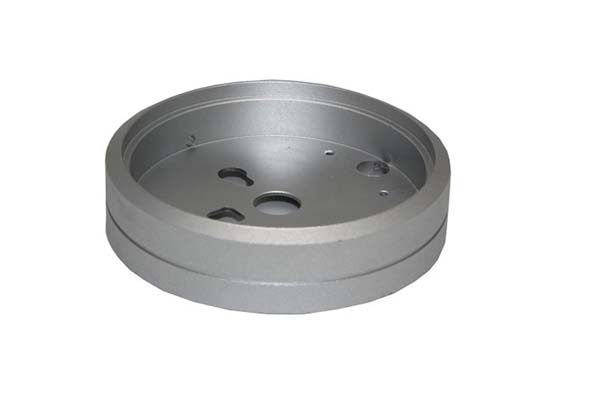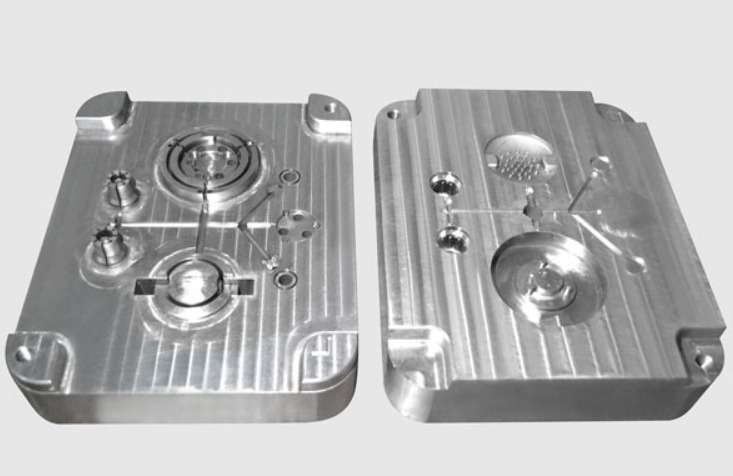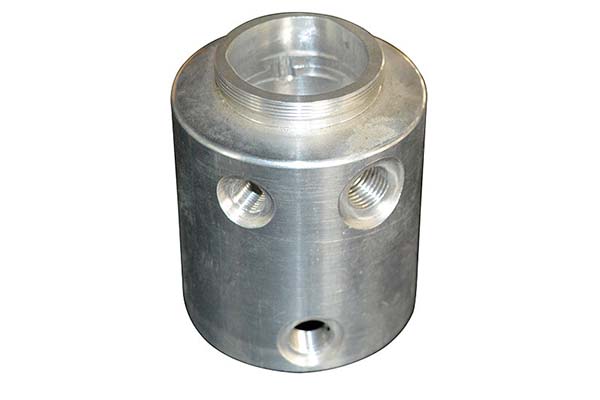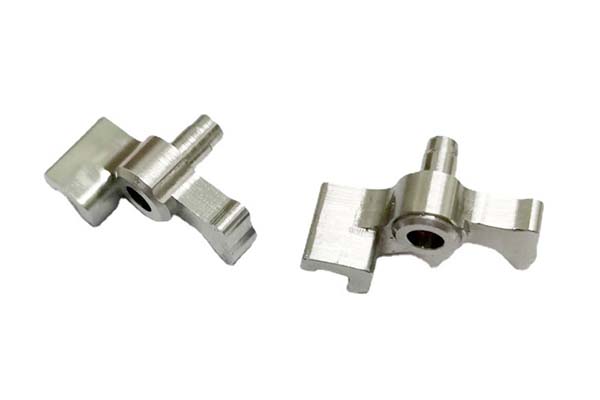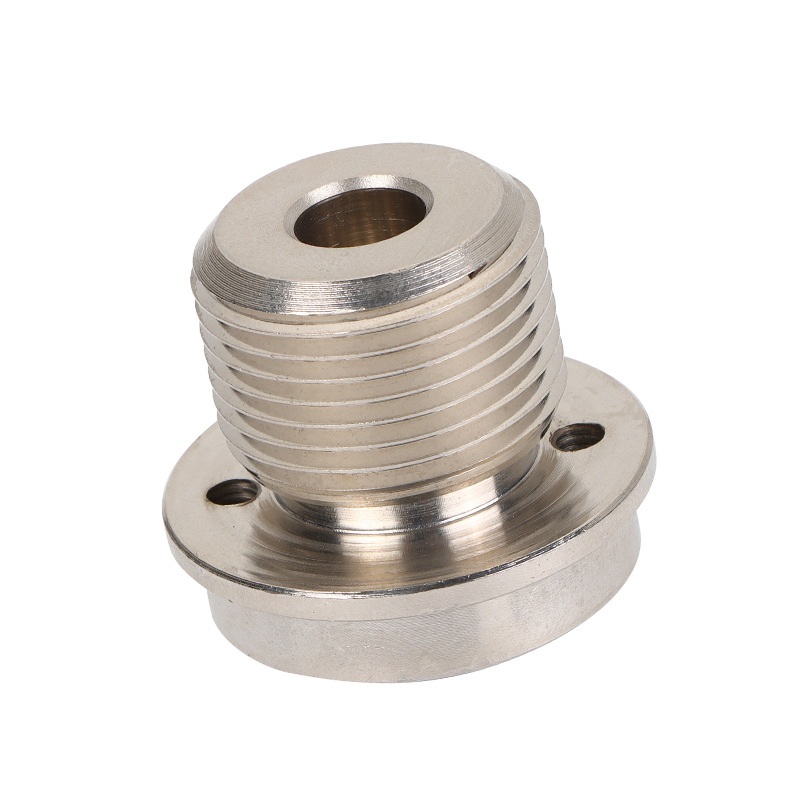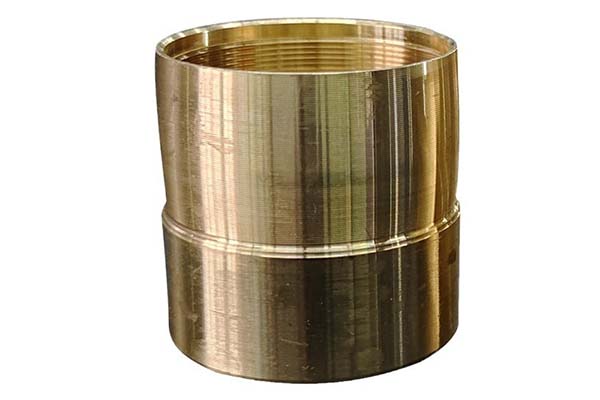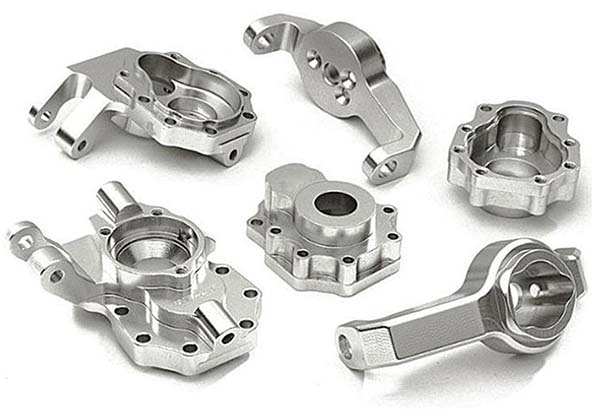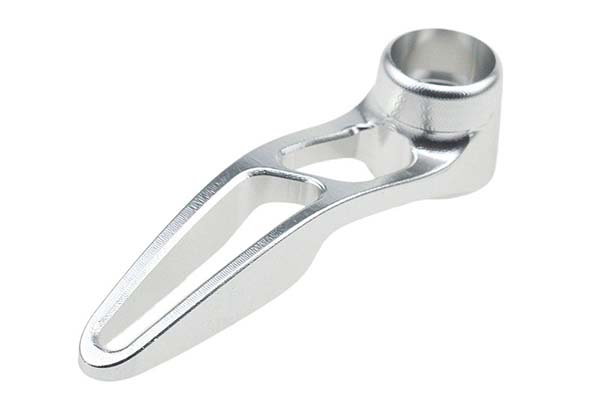Understanding Precision Machining
Precision machining is a high - accuracy mechanical processing process that uses advanced equipment and techniques to manufacture precision parts or components. It is all about achieving extremely tight tolerances, often within micrometers or even nanometers in some of the most advanced applications. This high - level of precision ensures that the final products meet the strictest quality and performance standards.
Applications Across Industries
- Aerospace Industry
- In aerospace, precision machining is crucial. For Yigu Technology example, turbine blades in jet engines are made through precision machining. These blades operate in extreme conditions of high temperatures (up to 1,700°C in some modern engines) and high rotational speeds (up to 30,000 revolutions per minute). To ensure efficient combustion, reduce fuel consumption, and enhance engine performance, the dimensions of these blades must be precise within micrometers. A deviation of even a fraction of a millimeter can lead to imbalances, reduced efficiency, and potentially catastrophic failures during flight.
- According to industry reports, engines with components produced through high - precision machining can achieve up to 15% better fuel efficiency compared to engines with less precisely - manufactured parts. This not only saves airlines significant amounts of money on fuel costs but also reduces carbon emissions, making it more environmentally friendly.
- Medical Equipment
- In the medical field, precision - machined components are used in a wide range of equipment. Take surgical instruments as an example. Micro - surgical tools, such as those used in ophthalmic surgeries (eye surgeries), need to be incredibly precise. The tips of these instruments are often machined to be less than 0.1 mm in diameter. This precision allows surgeons to perform delicate procedures with minimal damage to surrounding tissues.
- In medical implants, like hip and knee replacements, precision machining ensures a perfect fit within the human body. Implants with precise dimensions can better integrate with the patient's bone structure, reducing the risk of rejection and improving the long - term success rate of the surgery. Studies have shown that well - machined implants can last up to 20 years or more in the body, significantly improving the quality of life for patients.
- Automotive Industry
- Precision - machined engine components are essential for high - performance vehicles. For instance, pistons in high - performance engines are designed with extremely tight tolerances. The clearance between the piston and the cylinder wall is typically in the range of 0.03 - 0.08 mm. If this tolerance is not met, it can lead to issues such as engine knocking, reduced power output, and increased fuel consumption.
- Precision - machined transmission gears also play a vital role. They ensure smooth power transfer, reducing noise and vibration in the vehicle. High - end sports cars often rely on precision - machined components to achieve their superior performance, with some manufacturers claiming that precision - engineered transmissions can improve acceleration times by up to 10%.
| Industry | Key Components | Precision Requirements | Impact of Precision |
| Aerospace | Turbine blades | Micrometer - level precision | 15% better fuel efficiency |
| Medical Equipment | Surgical instruments, implants | Sub - millimeter precision for instruments, perfect fit for implants | 20 - year + lifespan for implants, less tissue damage during surgery |
| Automotive | Pistons, transmission gears | 0.03 - 0.08 mm clearance for pistons | Up to 10% improvement in acceleration for sports cars |
The Core Elements of Precision Machining
Advanced Equipment
Advanced equipment is the cornerstone of precision machining. State - of - the - art CNC (Computer Numerical Control) machines, for Yigu Technology example, are widely used. A high - end CNC lathe can achieve a positioning accuracy of up to ±0.001 mm. This means that when the machine is programmed to move the cutting tool to a specific position, it can do so with an error of no more than 0.001 mm. Such high - precision positioning is crucial for creating complex and accurate parts.
High - precision grinding machines are also essential. A precision cylindrical grinder can achieve a roundness accuracy of 0.0001 mm and a surface roughness of Ra0.01μm. These ultra - precise parameters enable the production of components with extremely smooth surfaces and precise geometric shapes, which are often required in industries like optics, where even the slightest imperfection on a lens surface can affect light refraction and image quality.
Skilled Workforce
Even with the most advanced equipment, a skilled workforce is indispensable. Operators need to have a deep understanding of machining principles, materials, and equipment operation. For instance, in the production of high - precision aerospace components, the operator must be able to interpret complex blueprints accurately. They need to know how different materials, such as titanium alloys, respond to various machining processes, including cutting speeds, feed rates, and coolant usage.
Training and experience play a vital role in skill development. Many companies provide in - house training programs. A newly hired machinist might undergo a 6 - month training period that includes both theoretical study, such as learning about CAD/CAM (Computer - Aided Design/Computer - Aided Manufacturing) software, and hands - on practice on different types of machining equipment. Over time, with years of experience, these machinists can handle more complex projects and troubleshoot issues that arise during the machining process more effectively.
Precision Programming
Precision programming is another key element. Traditional numerical control programming involves writing code to control the movement of machine tools. However, PM (Precision Machining) numerical control programming, which is more advanced, has some distinct advantages.
| Comparison Items | Traditional NC Programming | PM NC Programming |
| Efficiency | For a complex part, it may take a programmer several days to write the code. Each change in the part design often requires significant code modification, which can be time - consuming. | Using pre - set templates and parametric models, programming for a similar complex part can be completed in a few hours. When the part design changes slightly, only the relevant parameters need to be adjusted, greatly reducing the programming time. |
| Flexibility | Limited flexibility as each new task often requires starting from scratch in code writing. It is difficult to quickly adapt to changes in machining requirements. | High flexibility. It can easily adapt to different machining tasks and changes in part design by modifying parameters. For example, when switching from manufacturing one type of automotive engine component to another with a similar structure but different dimensions, the program can be adjusted in a short time. |
| Error - prone | Higher chance of errors due to the large amount of code writing and the need to manually calculate many machining parameters. | Lower error - rate. The use of templates and parameter - driven programming reduces the likelihood of human - made errors in code writing and parameter calculation. |
Real - World Examples of Precision Machining Excellence
In the Automotive Industry
Take the BMW M series as an example. BMW uses precision - machined engine components in its M - series high - performance cars. The crankshafts in these engines are made with precision machining. The straightness tolerance of the crankshaft is maintained within 0.02 - 0.05 mm. This high - level of precision ensures smooth engine operation, reduces vibration, and increases power output. As a result, BMW M - series cars can accelerate from 0 to 100 km/h in as little as 3.2 seconds, much faster than many of their competitors.
Another example is the Tesla Model S. In its electric drive system, precision - machined gears are used in the reduction gearbox. These gears are machined to have a pitch error of less than 0.01 mm. The high - precision gears enable efficient power transfer from the electric motor to the wheels, contributing to the Model S's long - range capabilities. The Model S can achieve a range of up to 652 km on a single charge, which is significantly higher than many other electric vehicles in its class, in part due to the efficiency improvements brought about by precision - machined components.
In the Aerospace Industry
Rolls - Royce's Trent series of jet engines is a great illustration. The compressor blades in these engines are precision - machined. The leading - edge radius of these blades is controlled within 0.05 - 0.1 mm. This precision is crucial for optimizing the airflow through the engine, improving combustion efficiency, and reducing fuel consumption. The Trent engines are known for their high thrust - to - weight ratios, with some models achieving thrust levels of up to 114,000 pounds, making them suitable for a wide range of commercial aircraft.
Boeing's 787 Dreamliner also heavily relies on precision machining. The wing spars, which are critical structural components, are precision - machined from advanced composite materials. The dimensional accuracy of these spars is maintained within 0.1 - 0.2 mm over their entire length. This precision ensures the structural integrity of the wings, allowing the 787 to fly at high altitudes (up to 43,100 feet) with enhanced fuel efficiency and passenger comfort.
FAQs
What is the difference between traditional machining and precision machining?
Traditional machining and precision machining have several key differences. In terms of accuracy, traditional machining typically has a tolerance range of ±0.1 - 0.5 mm. For Yigu Technology example, in a general metal - cutting lathe used for traditional machining, when turning a shaft with a diameter of 50 mm, the dimensional tolerance might be around ±0.2 mm. In contrast, precision machining can achieve much tighter tolerances, often in the range of ±0.001 - 0.01 mm. A precision - machined component for a medical device might have a diameter tolerance of ±0.005 mm.
Regarding equipment, traditional machining often uses basic machine tools such as ordinary lathes, milling machines, and drill presses. These machines are relatively simple in structure and do not require highly advanced control systems. Precision machining, on the other hand, relies on advanced CNC machines, high - precision grinding machines, and EDM (Electrical Discharge Machining) equipment. These machines are equipped with high - precision motion control systems and advanced sensors to ensure accurate machining.
The machining processes also vary. Traditional machining usually involves relatively simple operations like rough cutting, which focuses on quickly removing large amounts of material. Precision machining requires more complex processes. For instance, it often includes multiple finishing operations, such as precision grinding and polishing, to achieve the required surface finish and dimensional accuracy.
How to ensure the accuracy of precision machining?
To ensure the accuracy of precision machining, several aspects need to be considered. First, regular equipment maintenance is crucial. High - precision CNC machines should be serviced regularly. For example, the linear guides of the machine should be cleaned and lubricated every month to ensure smooth movement. The positioning accuracy of the machine axes should be calibrated at least once a quarter using precision measuring tools like laser interferometers. This helps to maintain the machine's original accuracy specifications.
Programming optimization also plays a significant role. When programming for precision machining, the programmer needs to carefully consider factors such as tool path, cutting speed, and feed rate. Using advanced CAM software can help generate more optimized tool paths. For example, the software can calculate the most efficient way to machine a complex 3D surface, reducing the number of unnecessary movements and ensuring consistent cutting forces, which in turn improves the machining accuracy.
The skills of the operators are essential. Operators should be well - trained in machining principles, material properties, and equipment operation. They should be able to interpret complex blueprints accurately and make real - time adjustments during the machining process. For example, if they notice abnormal vibrations during machining, they should be able to identify the cause (such as a dull cutting tool or incorrect spindle speed) and take appropriate measures to correct it immediately.
Which industries have the highest demand for precision machining?
The aerospace, medical, and electronics industries have a particularly high demand for precision machining. In the aerospace industry, components like turbine blades and engine casings require extremely high precision. Turbine blades, as mentioned before, operate in extreme conditions. The high - precision machining ensures that the blades can withstand high temperatures and rotational speeds, improving engine efficiency and safety. A small deviation in the shape or dimensions of these components can lead to significant performance issues or even catastrophic failures during flight.
In the medical field, precision - machined components are used in surgical instruments and implants. Surgical instruments need to be precise to perform delicate procedures. For example, micro - surgical forceps used in neurosurgery are machined to have very fine tips with precise gripping capabilities, allowing surgeons to manipulate tissues with minimal damage. Implants, such as dental implants, must be precisely machined to fit accurately into the patient's body, promoting osseointegration and long - term stability.
The electronics industry also heavily relies on precision machining. In the production of semiconductor chips, precision - machined molds and components are used in the manufacturing process. The high - precision molds are used to create the intricate patterns on the chips. For example, in the production of advanced 7 - nanometer chips, the molds need to be machined with nanometer - level precision to ensure the accurate formation of the tiny transistors and interconnects on the chip, which is crucial for the high - performance and miniaturization of electronic devices.
